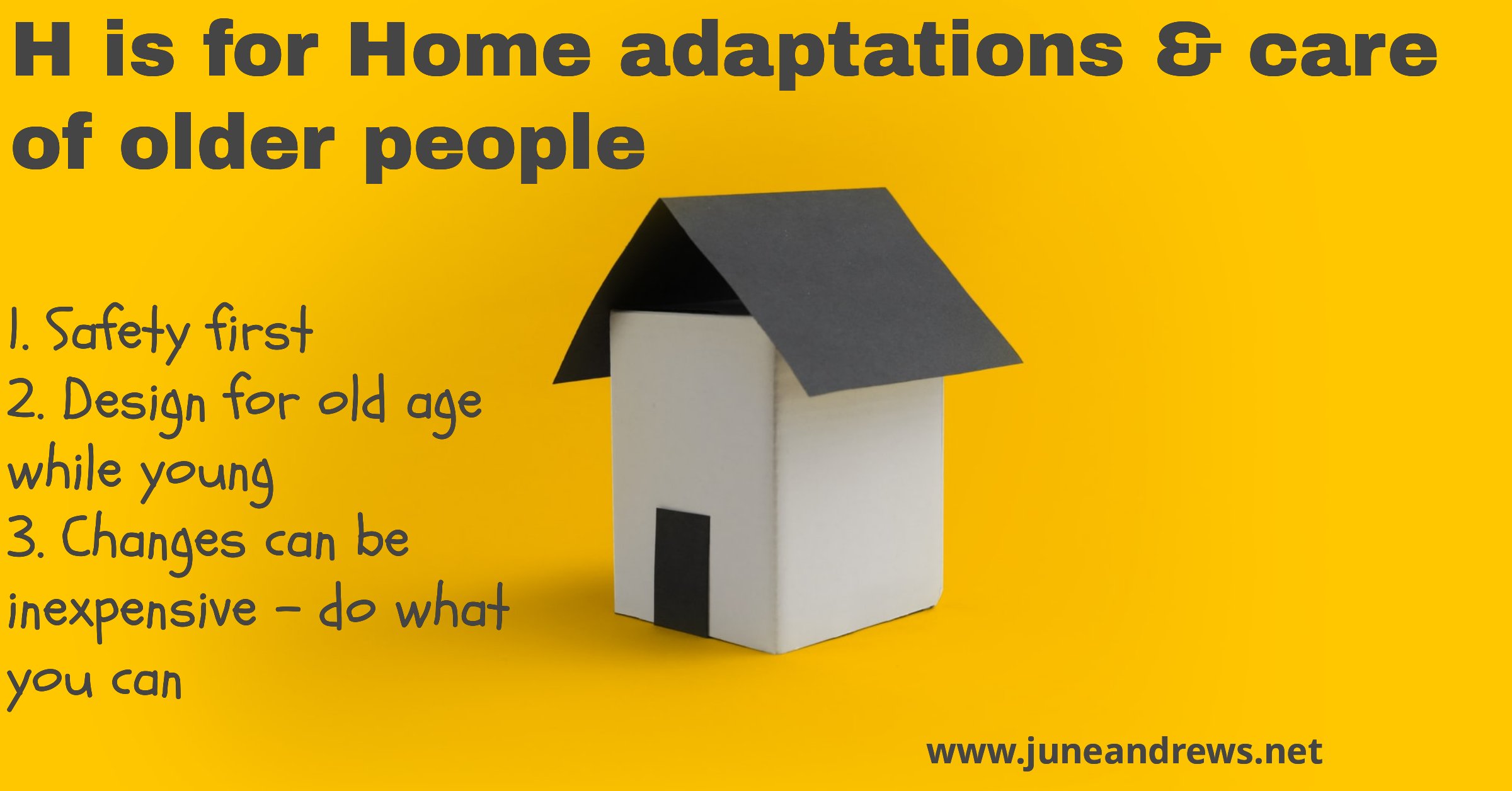Home adaptations
In the run up to publication of my new book Carers and Caring; the One Stop Guide; how to care for older relatives and friends I am sharing some of the practical solutions learned from research and experience. If you think any problems have been missed you can email me and tell me, and I’ll make sure they are covered in the next edition and online on my website at www.juneandrews.net.
Home adaptations
Advice on design adaptations in the home is based on understanding the normal changes of ageing, and what can be done to compensate for them. A lot of housing is poorly designed and requires adaptations and aids to be put in place if someone living there has a sensory, cognitive or physical impairment or disability. One day all housing will be universally designed in a way that accommodates people for the whole of their lives. But in the meantime, it’s good to know what changes can be made that are affordable and will make a difference. You can start making these changes to your own home now in preparation for later life.
The reaction times of older people are reduced, increasing the likelihood of injury from slips or trips. Younger people can recover their balance if they stumble. For older people the consequences of a fall are much more serious. It can be the first step towards hospitalisation, on the way to residential care. There are obvious changes that you can make, including putting non-slip strips in the bath and shower and coating hard floors with non-slip wax. Installing a wet room and making sure that there is a non-slip waterproof seat in the shower makes bathing safer.
Slips and trips
Increasing the light level at home makes a huge difference because there are changes in the ageing eye which have the same effect as wearing sunglasses inside the house. Or yellow goggles. Maximise the natural light by opening curtains and blinds and increase the number of lamps or the brightness of lamps in the rooms. It goes without saying that making sure the person has the right spectacles can help, and try to avoid glasses that go dark in sunlight because when coming into the house out of daylight the person is temporarily blinded and may fall over an unexpected obstacle.
Get an occupational therapist to come and do a risk assessment of the rooms, and they will certainly recommend that you remove rugs that might be a trip hazard and generally reduce clutter. Reducing clutter in wardrobes and cupboards can make it easier and less tiring for people to find things by themselves. Replacing standard knobs on doors with lever handles and doing the same with taps in the kitchen and bathroom helps people to use them independently if they have weakness in their hand or wrist.
Make sure there are non-slip treads on steps and put a bannister on stairways. Add a handrail on both sides. It would be ideal to have a toilet on the same floor as the bedroom for night-time and the living room for daytime. Who designs houses without that? Not carers.
It would help to have zero threshold entry points, including a walk-in bath and shower, but these changes start to be more expensive, as does widening doors and hallways and installing a stairlift. A well-designed house would already have light switches and electrical sockets on the walls at a level that could be accessed by a person sitting in a wheelchair.
These days, ordinary DIY stores sell kitchen units with accessible cupboards, like a pull-out pantry so you can reach items that would otherwise require stretching to the back of the cupboard, eye-level ovens and fridges, and cupboards with shelves that pull down, so people are less tempted to stand on a stool to reach up.
Kitchen worktops and even sinks can be fitted that move up and down, so they can be used at sitting height for some people and altered for use when someone stands to use them.
Consider security devices for the home. Smart ideas for door locks include ones that are operated by fingerprints, and key safes are very common.
There is much more about home adaptations in Carers and Caring: The One-Stop Guide: How to care for older relatives and friends - with tips for managing finances and accessing the right support available from all good bookshops in May 2022
Three hints:
1. Safety first
2. Design for old age while you are young
3. There are changes that are expensive, cheaper and cheap. Do what you can.

